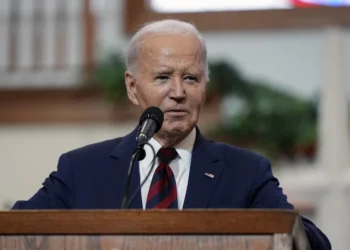As a historian, I often ask myself “What if?” as I ply the historical record, and James Garfield’s presidency remains a “What if?” question for me. Disciplined, intellectually curious, pragmatic during a time when reason sometimes seemed lacking in abundance, and devoted to public service, Garfield’s assassination just 100 days after his inauguration plunged the nation into mourning a fallen president for the second time in less than 20 years.
Into the presidency stepped Chester A. Arthur.
Arthur, born in a log cabin in rural Vermont to a Baptist minister and his devout wife who would move to New York with Chester and his seven siblings, attended Union College. A classics student, Arthur helped finance his education by teaching in a nearby town and, while reportedly enjoying his social and academic time, would graduate Phi Beta Kappa and then spend several years charting his future course.
He settled on the law, passed the bar in 1854, and then joined Erastus D. Culver’s prestigious firm, perhaps drawn by the firm’s participation in a historic abolitionist case. Arthur, a passionate abolitionist, found the Lemmon Slave Case intriguing. Culver had successfully obtained a writ of habeas corpus for eight slaves who had been brought temporarily to New York by their master who had placed the slaves in the city jail — for their safekeeping. The court interpreted that action as “bondage” in a ruling that challenged the Fugitive Slave Law and the Compromise of 1850. Arthur spent months working on the appellate case, enjoying long periods in Albany where he worked with many of the political and legal minds of the decade. Those relationships would aid his future rise.
When the South seceded and the nation erupted in battle, Arthur, who had previously joined the state militia, was ready for duty. Appointed as chief engineer with a rank of Quartermaster General, the lawyer served with distinction, handling the provisions and quartering of several hundred thousand New York soldiers joining the Union cause. Arthur ultimately rose to Brigadier General, and while anxious to obtain a battlefield commission, he was probably secretly relieved when it did not occur. His wife, Ellen, was a Virginian and her family supported the Confederacy, which made the war a painful period for the Arthurs.
Arthur returned to his legal practice by late 1863, growing quite wealthy from his portfolio of prominent cases, and then became a key supporter of Senator Roscoe Conkling. Promoted by Conkling’s endorsement, Arthur became the chief counsel to the NYC Tax Commission in 1869, at a salary of $10,000 per year. Two years later, President Ulysses S. Grant appointed Arthur as the Collector of the Port of New York, where his salary plus a percentage of the fines collected increased his annual income to more than $50K.
When President Rutherford B. Hayes attempted to reform such offices and challenged Senator Conkling’s control of New York politics and patronage, a political fight erupted. The Stalwart Republicans, led by the senator, negotiated a compromise that gained the nomination for Garfield, with Arthur eventually accepting the vice presidential slot, against his mentor’s recommendation. Arthur proved to be a hardworking candidate, organizing mass meetings and handling the planning for the party’s national campaign tour. Garfield won 214 electoral votes to his opponent’s 155, although the popular vote was separated by only one-tenth of 1%.
With the Garfield assassination, Arthur assumed the presidency for his first term.
What were his major accomplishments?
He signed the Pendleton Civil Service Reform Act, which established a five-member bipartisan examination board for federal employment and also eliminated salary kickbacks, created state equity among federal appointments, and established a system of merit promotions. It did not remove patronage appointees then serving, but it was a first step toward reform. He also believed federal surpluses should result in lower taxes instead of the funding of “pork barrel” projects that gained congressional members favor with their constituents.
Tariffs were a hot topic in the 1880s, and the new president favored lower tariffs to increase trade and support U.S. manufacturers through competition and foreign markets. Out of step with his own party and over his veto, Congress passed the Mongrel Tariff of 1883 that lowered tariffs less than 2% while the president had advocated for 20%-25%. He would later speculate that the increased tariffs had contributed to the financial recessions of the decade.
One other major project had caught his attention, and Louis Comfort Tiffany would serve as his partner…

















